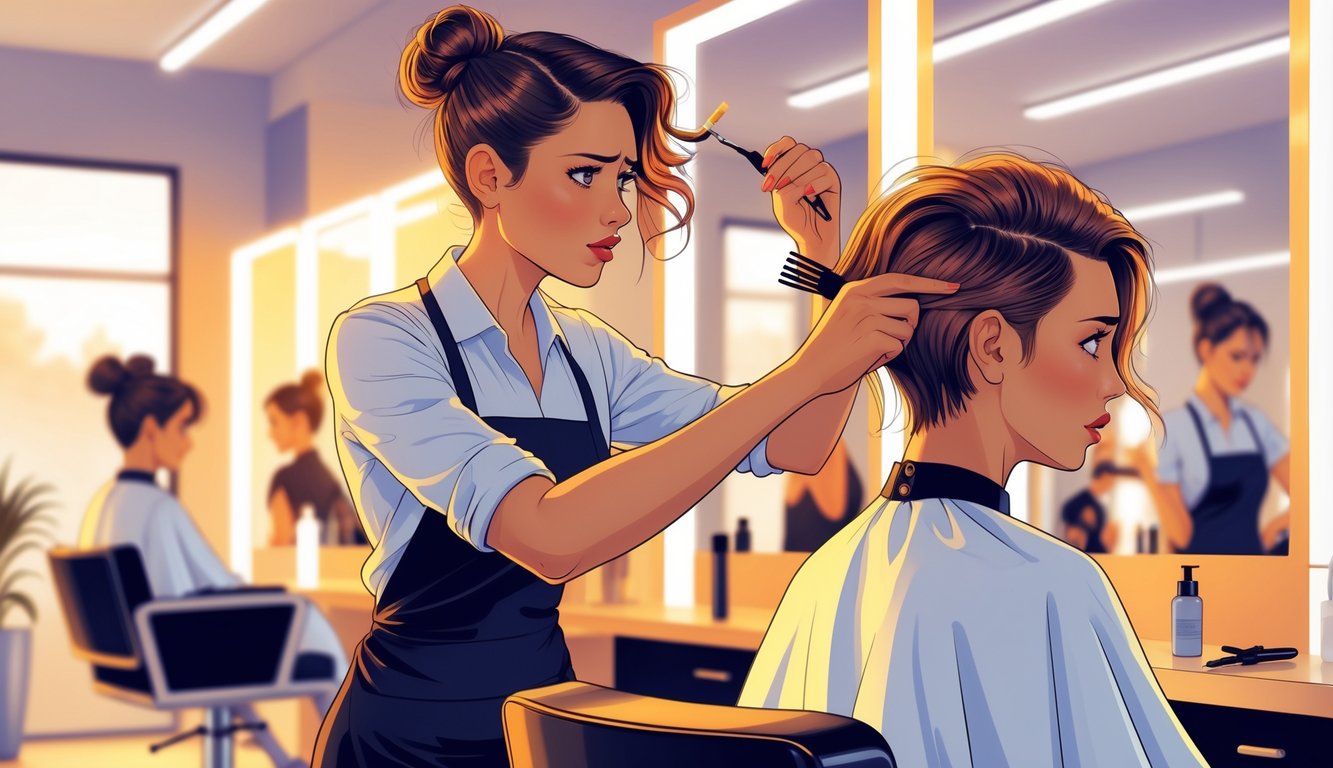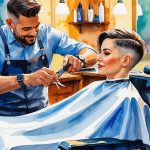
Preventing Haircut Regrets Before They Happen
I’ve done it—walked into a salon convinced a new cut would fix my mood, then woke up the next day with random layers and that “oh no, what did I do?” feeling. Nobody warns you about that. Turns out, the tiny details—reference pics, awkward salon convos, even that one stubborn cowlick—are what matter. Stylists? They clock your hesitation instantly. One weird pause and suddenly your “transformation” is full of caveats.
Bringing Inspiration Photos
Pinterest boards, movie screenshots, that one glossy Instagram bob—every time I show a stylist my phone, I’m convinced it’ll make things foolproof. Never does. They want more angles, more questions: What don’t you like about your current cut? Where do you want your hair to hit? What’s the non-negotiable—length, volume, the illusion of effortless cool?
But here’s the thing nobody says: A perfect photo means nothing if your hair’s plotting against you. A colorist I trust once told me, “Bring at least two photos—show the good, the bad, and the back. Otherwise, we’re guessing.” Hair pros agree: people regret cuts most when they skip the visual talk. I once brought a pic of my old haircut just to say, “Let’s not do this again.” It worked, sort of.
Discussing Maintenance and Growth
Nobody ever mentions maintenance until it’s too late. If a cut needs three products and 20 minutes of round-brush sorcery just to look okay, count me out. Stylists warn you, sometimes gently, sometimes not: If you can’t commit to blow-drying, don’t go for anything blunt or geometric or that needs daily heat.
Table: Cut Styles vs. Required Maintenance
| Cut Style | Daily Styling Requirement | Realistic Regrowth Period |
|---|---|---|
| Pixie | High—frequent trims, product use | 4-6 weeks per maintenance |
| Blunt Bob | Moderate—flat iron suggested | 6-8 weeks for shape upkeep |
| Layered/Shag | Low—air-dry possible | 3+ months until restyle needed |
No stylist just blurts out, “You’ll hate this in three weeks,” but the good ones drop hints (“Are you okay with cowlicks till October?”). I once went for a “summer cut,” totally forgetting how much I hate humidity plus bangs. Never again. Pro tip: Always ask how it’ll grow out. Nobody tells you about that regret until it’s too late.
Understanding Hair Limitations
Worst part? My hair lies to me. Every photo, every breeze. I thought I could get the Rachel—nope. Not with my thick, stubborn hair, unless I wanted to spend my life with a straightener. Stylists know it the second they run a comb through and pause. Gravity always wins.
The biggest mistake I see? Ignoring your hair’s actual texture or growth pattern, thinking a “good stylist” can outsmart genetics. Spoiler: they can’t. No one’s coming to your house to style it every morning. When they say, “Let’s be realistic,” they mean “Please, lower your expectations.”
I used to think deep conditioners or miracle products would fix anything (keratin! coconut oil! magic beans?), but honestly, if your hair doesn’t want to cooperate, nothing helps. I got a perm on a whim once—six months of chaos. Long hair hides mistakes, short hair puts them on blast. Not a metaphor. Or maybe it is, but I’d rather not think about it.
The Role of Follow-Up Appointments
So there I am, regretting those blunt bangs, and everyone’s acting like it’s “intentional.” You notice right away (and so does the stylist): there’s this weird tension between what you asked for and what’s actually on your head. One bad cut isn’t the end of the world, but fixing it? Not as easy as just skipping leg day. Nobody tells you a second appointment might fix your hair—or maybe just your attitude.
Encouraging Open Communication
Stylists get weirdly quiet when you say, “I wanted something different.” They spot nerves faster than you do. I read somewhere that follow-up visits actually help about 70% of clients (which, if true, is wild).
The more I ramble, the closer I get to what I actually want. Sometimes it’s not length—it’s the shape, the part, the weird flick at the ends. A salon manager once told me, “You can’t fix what you don’t talk about.” And it’s true—stylists see everything: the sighs, the fake “I love it,” the hat you refuse to take off. Being honest doesn’t guarantee a miracle, but nobody’s psychic, especially when your appointment’s squeezed between two others.
List every single thing that bugs you (I hate that my ears stick out now), and suddenly you’re getting tips—soft layers to hide cowlicks, texturizing spray for fake movement. Stylists love before-and-afters. Just don’t expect magic. Sometimes “better” is the best you get—unless you’re ready to become a hat person.
Planning for Minor Corrections
I’ve seen stylists measure everything and still mess up the blend in the back. Fixing a bad snip isn’t like returning shoes—it’s time, not a quick swap. Turning a botched bob into something decent might mean trims every week, or living through that awkward in-between stage that feels like karma for trusting an Instagram trend.
Here’s the secret nobody likes to say: fixing mistakes usually takes multiple appointments. Stylists hate admitting it because everyone wants a quick fix. I let a too-short fringe grow out with “micro-adjustments” every two weeks. It almost worked. (Or maybe I just got used to it.)
Stylists have tricks—heat tools, blending shears, maybe a color tweak to distract from unevenness. Sometimes, the best you can do is style around the mistake.
What nobody admits: if the cut is totally wrong for your hair texture, it’ll take months, not days, to fix. So when someone says “try a follow-up,” it’s code for “this’ll take a while, trust us”—which is not comforting when you’re wearing a beanie at work.
Rebuilding Trust After Haircut Disappointments
Those blunt bangs last spring? Still a sore spot. I can’t even walk past that salon without remembering the stylist’s “it just needs time to settle.” Do they say that to everyone, or did I just have a weird face? Supposedly, consultations at places like Spoke & Weal are meant to prevent this, but nobody gave me a script and I just blurted out “give me a vibe.”
Stylists spot anxiety faster than I can finish my coffee. They see the head tilts, the desperate glances for reassurance, the white-knuckled grip on your bag. I caught my stylist watching my face in the mirror, not the haircut—probably wondering if I was about to cry. Jaime Slavin, a colorist, says “Clients don’t always say what’s wrong, but body language never lies.” So yeah, the best relationships start with awkward honesty: “I hated my last cut and now I’m terrified.”
I’ve lost count of how many stylists wanted the full backstory. For some reason, mentioning my stress eczema made it less weird. Some recommend bringing two photos: one of what you want, and one of your worst hair moment. It’s awkward, but it helps. If you need a cheat sheet, here’s why words fail with stylists.
Salon etiquette tip: Don’t fake being happy. Stylists know. I tried once and still left with a free calming serum sample. Coincidence? Maybe. But the stylists were whispering in the back, and I saw it. If you’re gutsy enough to say “I can’t pull this off, can we fix it?” sometimes you get “Let’s sort this together.” Other times, you get a coupon.



